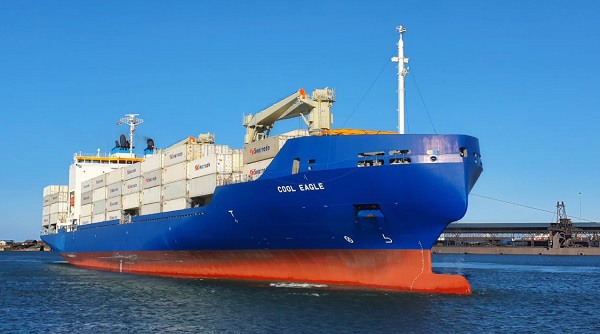The outlook on citrus production and export from Southern Africa clearly shows a massive growth phase is currently in play. Tree census data confirms this and the outlook is for more than 200 million 15kg equivalent cartons being produced and exported in the near future.
Evaluating this data shows that at least by the 2025 export season, the probability to produce and export 190 million 15 kg equivalent cartons is a definite reality. The big question that should be on every grower and exporter's mind is: how the logistics chain is going to manage this volume?
More especially, is there shipping capacity and enough spare refrigerated (reefer) containers globally to position in South Africa to match this demand? My gut feeling tells me it is going to be very tough given the global demand for reefer containers is outweighing supply annually. Aligned to this is the high probability of reefer freight rates surging as demand for reefer containers begins to massively exceed supply.
Actual and projected figures of South African citrus growth
If one considers that the fleet of conventional reefer ships is in rapid decline due to scrapping of vessels way exceeding new builds, this could spell a disaster. Assuming a stagnant (or even declining) volume of citrus shipments in conventional reefer ships going forward, then the reefer container demand could increase from 85,000 reefer units shipped in 2020 to 110,000 reefer units required by 2025, a whopping 30% increase.
Disastrous outcome awaits if no large increase in new reefer vessels
Only four new conventional reefer vessels have been built in recent years which means the availability of these ships will get to a level where container lines would have no real direct competition on this trade lane. Unless there is a radical increase in new builds of reefer ships, I fear the outcome will be disastrous.
 The newest reefer vessel in the world, the hi-cube mv Cool Eagle
The newest reefer vessel in the world, the hi-cube mv Cool Eagle
The vessel mv Cool Eagle; which is the most recent conventional reefer ship built in 2021, recently called to South Africa to load citrus for Rotterdam and St. Petersburg. This vessel is the only vessel of its kind and the largest reefer vessel in the world. The uniqueness is the fact that it can load around 8,000 high cube pallets under-deck and about 6,000 high cube pallets in containers loaded on deck. That’s the equivalent of roughly 700 reefer containers of citrus.
Proposal for fruit export industry to commission its own reefer vessels In my view, the fruit export industry needs to give some serious strategic thinking about commissioning the building of four such vessels that can be brought into a long term charter between South Africa, the Netherlands (or Belgium for that matter) and the United Kingdom. There is ample export volume of fruit from Southern Africa to these important countries to warrant such a long term development.
In my view, the fruit export industry needs to give some serious strategic thinking about commissioning the building of four such vessels that can be brought into a long term charter between South Africa, the Netherlands (or Belgium for that matter) and the United Kingdom. There is ample export volume of fruit from Southern Africa to these important countries to warrant such a long term development.
There is also scope to ship goods back to South Africa to ensure the vessels don’t return empty.
Consider all the challenges brought about by Transnet and the repercussions of this going forward. For what it’s worth, we don’t see any indication that the state of affairs at Transnet is going to change; in fact, the likelihood is for a worsening situation to develop due to massive underinvestment of equipment and maintenance.
Fruit exports to Europe & UK need a serious rethink
Citrus growers and exporters would be astounded to learn that it takes on average 21 days (average evaluation SAECS & MSCEM, March to May 2021 – Source: Linernet) for a container packed in Durban just to depart Cape Town and on average a further 16 days to arrive in Europe. Why some may ask, the answer is that container vessels are taking that long to call through the South African port system due to low productivity - amongst other delays.
My opinion is that the fruit growers of Southern Africa need to consider that the future sustainability of exporting of fruit; in particular to Europe and United Kingdom needs a serious rethink! The answer is not to ship containers from Walvis Bay, or Richards Bay or Maputo. The answer in my humble opinion lies with vessels like the mv Cool Eagle which operate from private South African terminals. Terminals which, in fact, were owned by the fruit farmers themselves at one point.
For more information: Mitchell Brooke
Mitchell Brooke
CGA Logistics Development Manager
Tel: +27 31 765 2514
Email: [email protected]
http://www.cga.co.za
